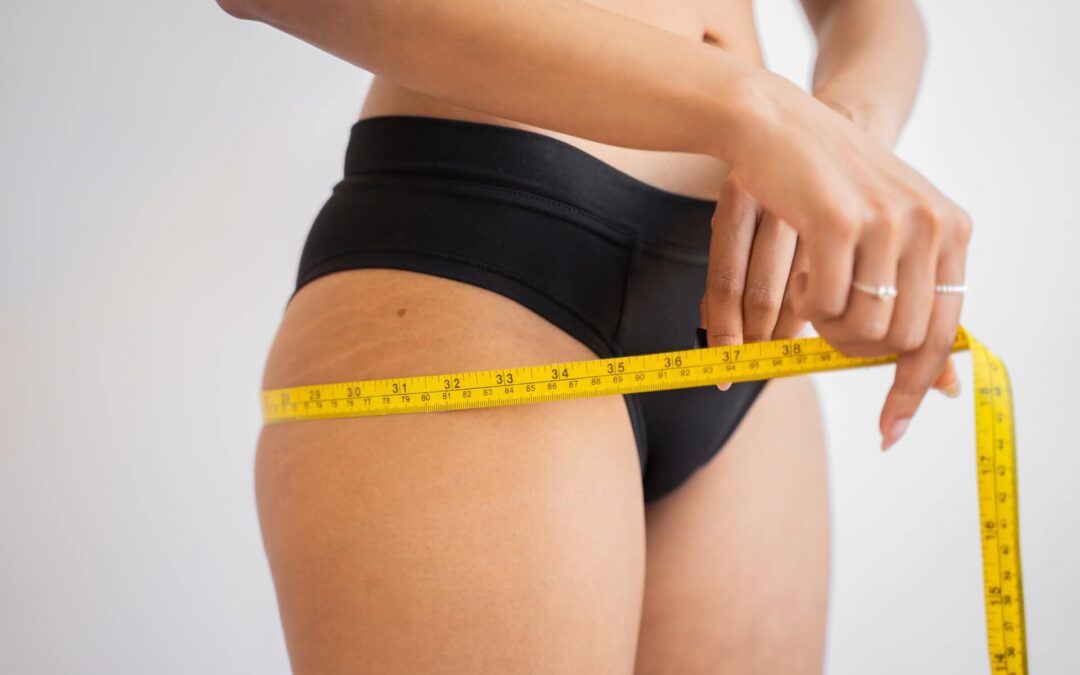Cellulite is and always has been a hot topic. What is it? How do I get it off my body? What is the fastest way to get rid of it? Why do some skinny, fit people also have it?
It wasn’t until I started learning more about human anatomy and physiology, and blended that with my own experience in exercise, nutrition, and bodywork that this theory on cellulite spat forth. This may or may not be correct, but I’ll explain why it seems that is may be a contributing factor.
Cellulite is thought to occur in 80–90% of post-adolescent females, and the prevailing medical opinion is that it is merely the “normal condition of many women”(1).
Below are the possible causes of cellulite formation which we have been informed about over the years by scientists and physicians.
1. Hormonal
Oestrogen imbalances may be a big player to the formation of cellulite. This theory is based on the evidence that cellulite is straight-up more common in females, and also that cellulite is more common in males with androgen-deficient states. Other hormones such as insulin, stress-hormones (such as adrenalin and cortisol), thyroid hormones and prolactin, are all believed to play a role in the cellulite dilemma (2).
2. Genetic
Genetic factors may play a role, yet more evidence is required. Examples of studies conducted on cellulite susceptibility genes include those led by Enzo Emanuele (3), which have observed particular morphisms of the angiotensin converting enzyme (ACE) and hypoxia-inducible enzyme factor 1A (HIF1a) genes.
3. Lifestyle / Stress
Stress-hormones (such as adrenalin, noradrenalin and cortisol to name a few of the more common ones) have been linked with the formation of cellulite (2).
Stress can be brought on by physical, mental, emotional or spiritual factors. We know for sure today that stress-related health issues are a big deal in our modern day world.
Physical Factors
- Injury.
- Over or under exercising.
- Poor posture.
- Chemicals, radiation, smoking, air pollution, water pollution.
- Sunburn, overexposure to cold.
- Medications.
- Poor sleep.
- Poor digestion.
- Hormone imbalances.
- Under and over eating.
- Poor food choices including processed foods and conventionally farmed foods.
Mental Factors
- Work stress.
- Relationship stress.
- Type A personalities.
- Perfectionism.
- Time pressure/deadlines.
- Over-thinking, over-analysing, self-critical.
Emotional Factors
- Big emotional highs and lows (anger, frustration, ecstasy, depression, fearful etc).
- Related to perceptions of what something means to you (based on your desires and fears).
Spiritual Factors
Connection or disconnection to something greater than you.
4. Other factors
Gender, race and biotype, distribution of the fat which is located just under the skin (subcutaneous fat), lymphatic and circulatory issues have all been linked to the chance of developing cellulite (2).
Apart from diet and lifestyle advice as suggestions to combat cellulite, below are a few other treatments that have been trialed and tested, with a success rate insufficient to accept as the ducks nuts.
Cellulite Creams
Cellulite creams are said to “dissolve fat under the skin” and “smoothen out the skin”. Too easy. My first instinct is that these are unnatural and sound too good to be true. Some of the chemicals contained in them (such as anti-asthmatic chemicals) have dangerous side effects (allergies, narrowing of blood vessels and forcing water out of the skin), and if they did work, cellulite would have been knocked on the head years ago to anyone with enough mulah.
Liposuction
Liposuction is a surgical procedure which removes deep fat, not the fat under the skin which is the cellulite fat. The American Academy of Dermatology warns that liposuction may actually worsen the appearance of cellulite by creating more depressions in the skin. Since liposuction is not addressing the subcutaneous fat, and since any surgery is traumatic and therefore considered another stress on the body, this is not surprising.
Laser treatment, skin injections of vitamins / minerals / enzymes
These may break down fat under the skin and bring an improvement in the appearance of cellulite, but for me, they are a quick fix, are unnatural and do not address the cause, so how could they be long lasting?

I don’t know enough about the genetic issues, but I would say each of the above four factors have an influential role in the development of cellulite. I’d say lifestyle issues have a major impact, and stress is at the forefront of a zillion health issues we’re seeing today.
My theory –
The Fat Gets There Somehow and Then it Interacts with Fascia
If I were to explain in one minute what I think cellulite is all about, I’d say there’s fat accumulation that gets trapped in the connective tissue underneath the skin. I’d say the fat has accumulated from any or all of the genetic, hormonal, lifestyle and stress factors mentioned above (fat accumulation is not purely diet and exercise related) and I’d call this connective tissue which has bound the fat, fascia.
Fascia is connective tissue fibers, primarily collagen, that form sheets or bands beneath the skin to attach, stabilize, enclose, and separate muscles and other internal organs.
You would be wasting your time with expensive cellulite creams, diet pills, fat-breakdown enzymes and even liposuction, since none of these address the cause and so therefore none of these are long-lasting, not to mention if they even work.
My beliefs on reducing cellulite
1. Diet, Exercise, Sleep, Hydration and Meditation – Reduce Stress And Reduce Extra Body Fat
Reduce the amount of unneccessary fat and toxins you’re carrying by trying these age-old wisdoms:
- Get more quality sleep, rest and clear your mind. Meditate, breathe, stay cool and stay Zen whenever and wherever you can.
- Learn what triggers you emotionally on a day-to-day basis and look at healing those fearful parts of you that make you feel inadequate, unlovable and less than whole which can cause outbursts of anger, frustration, impatience, confusion and depression.
- Address areas of your life that are creating too much pressure for you – social, familial, corporate or personal. Prioritise and focus on goals that will lead you toward your dream life, learn when to listen to others and when to switch off.
- Drink enough clean water every day. Eat more fruits and vegetables, eat sustainably raised foods, support local farmers, eat less processed foods, indulge occasionally and intelligently, don’t diet, listen to your body and notice what foods create bloating, indigestion, foggy thinking or hormonal imbalances, notice what foods raise of depress your energy levels, eat to live rather than living to eat.
- Move more or less if you’re an over-exerciser. Stretching and strengthening the connective fibers underneath the skin (in addition to burning away excess fat overall) can help with cellulite issues. Moving the right amount will also improve digestion, hormonal health, cardiovascular health, mental health, strengthen the bones, immune system and respiratory systems, increase metabolism, strength and confidence, improve body composition and make you feel more alive.
2. Deep Myofascial Massage
This is the controversial part. If fat cells are trapped within connective tissue, and since we know how tightly fascia can grip around muscles, tendons, and nerves, causing dysfunction in movement, posture, and body sensations, more people could consider addressing cellulite with this form of massage. If you’ve tried massage and found it ineffective, what type was it? Did it feel like a Chinese burn? Did you sense a lengthening of tissues under your skin, akin to a snake shedding old skin? This is the kind of massage, combined with deep tissue massage, that I advocate. I also believe vibration massage therapies could help. The massage may cause “good” discomfort. You can also learn forms of myofascial stretching, which will create a similar burning sensation, but keep it tolerable.
To Sum Up
In conclusion, understanding cellulite involves debunking myths and exploring various treatment options. While there’s no one-size-fits-all solution, addressing factors like diet, lifestyle, hormones and stress can play a significant role in managing cellulite. From embracing massage therapies to considering lifestyle changes, finding what works best for you is key. Remember, cellulite is a common condition that affects many, and seeking professional advice can provide personalized guidance for achieving smoother, healthier-looking skin.
References
1. Wanner M, Avram M (April 2008). “An evidence based assessment of treatments for cellulite”. J Drugs Dermatol 7 (4): 341–5. PMID 18459514.
2. Rossi AB, Vergnanini AL (July 2000). “Cellulite: a review”. J Eur Acad Dermatol Venereol 14 (4): 251–62. doi:10.1046/j.1468-3083.2000.00016.x. PMID 11204512.
